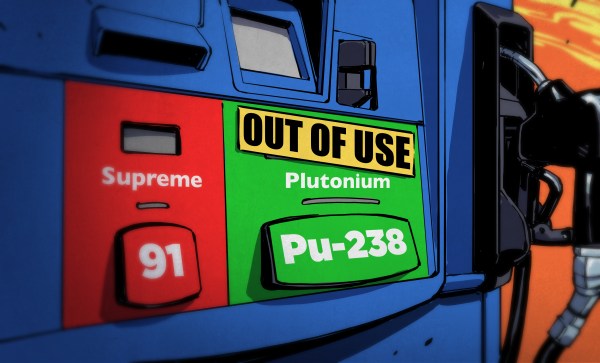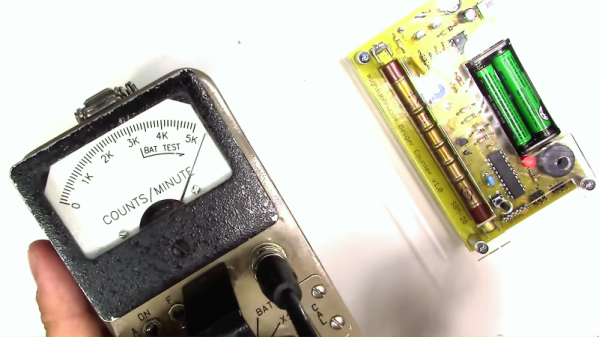There are times in one’s life when circumstances drive an intense interest in one specific topic, and we put our energy into devouring all the information we can on the subject. [The Current Source], aka [Derek], seems to be in such a situation these days, and his area of interest is radioactivity and its measurement. So with time to spare on his hands, he has worked up this video review of radioactivity and how Geiger counters work.
Why the interest in radioactivity? Bluntly put, because he is radioactive, at least for the next week. You see, [Derek] was recently diagnosed with thyroid cancer, and one of the post-thyroidectomy therapeutic options to scavenge up any stray thyroid cells is drinking a cocktail of iodine-131, a radioisotope that accumulates in thyroid cells and kills them. Trouble is, this leaves the patient dangerously radioactive, necessitating isolation for a week or more. To pass the time away from family and friends, [Derek] did a teardown on a commercial Geiger counter, the classic Ludlum Model 2 with a pancake probe. The internals of the meter are surprisingly simple, and each stage of the circuit is easily identified. He follows that up with a DIY Geiger counter kit build, which is also very simple — just a high-voltage section made from a 555 timer along with a microcontroller. He tests both instruments using himself as a source; we have to say it’s pretty alarming to hear how hot he still is. Check it out in the video below.
Given the circumstances, we’re amazed that [Derek] is not only keeping his cool but exhibiting a good sense of humor. We wish him well in his recovery, and if doing teardowns like this or projects like this freezer alarm or a no-IC bipolar power supply helps him cope, then we all win.
Continue reading “The Ins And Outs Of Geiger Counters, For Personal Reasons” →















